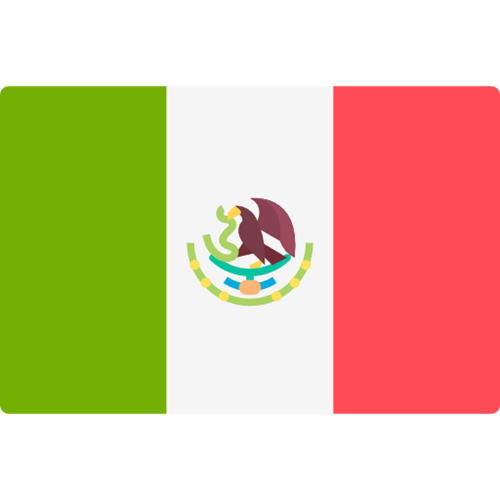Chemicals | Monthly bulletin | September 2023


Europe
PFHxS are now officially part of POPs
On 8th August 2023, the European Commission published Delegated Regulation (EU) 2023/1608 of 30 May 2023, which amend Annex I to Regulation (EU) 2019/1021 of 30 May 2023. This relates to persistent organic pollutants (POP), which updates specially concerning perfluorohexane sulfonic acid (PFHxS), its salts and PFHxS-related compounds, which have been adopted in the new version published.
The amendment adds the substance Perfluorohexane sulfonic acid (PFHxS), its salts and PFHxS related compounds to Part A of Annex I to Regulation (EU) 2019/1021 (POP), which lists substances prohibited to be used for manufacturing, placing on the European market, and use.
The Specific exemption on intermediate use or other specification are:
|
Substances |
CAS number |
exemption |
|
Perfluorohexane sulfonic acid (PFHxS), its salts |
355-46-4 and others |
≤ 0.025 mg/kg (0,0000025 % by weight) in substances, mixtures or articles |
|
PFHxS-related compounds |
355-46-4 and others |
≤ 1 mg/kg (0,0001 % by weight) (as sum) in substances, mixtures or articles |
|
PFHxS, its salts and PFHxS-related compounds |
355-46-4 and others |
≤ 0.1 mg/kg (0,00001 % by weight) (as sum) in firefighting foam mixtures |
This regulation entered in force on 28th August 2023.
New requirements for batteries
On 28 July 2023, the European Commission published Regulation (EU) 2023/1542 of 12 July 2023 concerning batteries and waste batteries, amending Directive 2008/98/EC and Regulation (EU) 2019/1020 and repealing Directive 2006/66/EC.
This regulation lays down requirements on sustainability, safety, labelling, marking and information to allow batteries to put on the market or into service within the European Union. It also stipulates the minimum requirements for extended producer responsibility, collection and treatment of waste batteries, and reporting.
It applies to all categories of batteries, including portable batteries; starting, lighting and ignition batteries (SLI batteries); light means of transport batteries (LMT batteries); electric vehicle batteries and industrial batteries, regardless of their shape, volume, weight, design, material composition, chemistry, use or purpose. It shall also apply to batteries that are incorporated into or added to products or which are specifically designed to be incorporated into or added to products.
The Regulation entered into force on 17 August 2023, and it shall apply from 18 February 2024 with the following provisions:
- Conformity assessment procedures shall apply from 18 August 2024.
- Management of waste batteries shall apply from 18 August 2025.
- Removability and replaceability of portable batteries and LMT batteries shall apply from 18 February 2027.
Directive 2006/66/EC shall be repealed on 18 August 2025. However, the following provisions shall continue to apply as set out below:
- Removal of waste batteries and accumulators until 18 February 2027.
- Treatment and recycling until 31 December 2025, except as regards the provision for transmission of data to the Commission, which shall continue to apply until 30 June 2027.
- Labelling until 18 August 2026.
Recent publications regarding REACH Regulation
The following table provides a non-exhaustive summary of some recent updates regarding REACH Regulation (EC) No 1907/2006:
| Summary of the most recent updates | ||
|
Date |
Subject |
Link |
|
16/08/2023 |
The European Chemical Agency (ACHE) has shared a file containing key information on potential alternatives to the Annex XIV substance(s), extracted from Analysis of Alternatives (AoAs) that was submitted as part of their authorisation application. The file contains data available as of 30 June 2023. |
Consult the table of shortlisted alternatives here. |
|
17/08/2023 |
Following Regulation (EU) 2023/1542 regarding batteries entering into force on 17 August 2023, the European Chemical Agency (ECHA) will assist in the development of a Commission report into substances of concern found in batteries or used in their manufacturing, that have negative impacts on human health, the environment or recycling for safe and high-quality raw materials. It is expected that the ECHA will begin its work on this report in 2024 and reach completion towards the end of 2027. |
For more information, consult the ECHA’s website here. |
Other interesting links about REACH from the ECHA’s website
- Registry of restriction intentions until outcome - ECHA (europa.eu)
- Registry of SVHC intentions until outcome - ECHA (europa.eu)
- Substance evaluation - CoRAP - ECHA (europa.eu)
- Adopted opinions and previous consultations on applications for authorisation - ECHA (europa.eu)
- Applications for authorisation - current consultations - ECHA (europa.eu)
- Current calls for comments and evidence - ECHA (europa.eu)
- Authorisation List - ECHA (europa.eu)
- ECHA's completed activities on restriction
- Submitted restrictions under consideration
- Assessment of regulatory needs list
Interesting links about CLP on the ECHA’s website
- Registry of CLH intentions until outcome - ECHA (europa.eu)
- Harmonised classification and labelling consultations - ECHA (europa.eu)
Spain
Changes in Spanish toxicological notification for substances and mixtures
On 27 July 2023, the Spanish Ministry of Justice published Order JUS/877/2023 of July 21, which modified Order JUS/288/2021 of March 25. This order regulates the procedure for notifying the National Institute of Toxicology and Forensic Science (INTCF) of chemical substances and mixtures.
The order adapts Spanish regulations in the line with European regulations on notifications of chemical substances and mixtures marketed in Spain due to new technological developments in the ECHA notification system.
The main changes are as follows:
- Cessation of marketing of the mixture:
Importing manufacturers or intermediate users will be required to notify the INTCF directly by means of a document, signed electronically, which includes the name and Unique Formula Identifier (hereinafter, UFI) of the mixture that has ceased to be marketed. For notifications made through the harmonised procedure, the notification of cessation must be made through the procedure established by ECHA. Until now, this could only be done directly to the Spanish Toxicological Information Service.
- Submission report
The need for the Spanish Toxicological Information Service to issue an acknowledgment of receipt is eliminated to fulfill the legal obligation of communication provided for in Law 8/2010 of March 31. Once the notification has been made to ECHA, companies will be able to download the accreditation document (submission report) on the European agency's notification portal that summarises the status and context of the notification, and that allows them to confirm that the information has been received by Spain.
This order will take effect on July 28, 2023.
UK
New submission deadlines for UK REACH
On 19th July 2023, the Secretary of State published the Statutory Instruments 2023 No 772 related to UK REACH Regulation, which amended the retained version of Regulation (EC) No 1907/2006 concerning the Registration, Evaluation, Authorisation and Restriction of Chemicals (“the REACH Regulation”).
The amendment extends of submission deadlines:
|
New submission deadline |
Kind of substances |
|
27/10/2023 |
|
|
27/10/2028 |
|
|
27/10/2030 |
|
It entered into force on 19th July 2023.
Extension of exemption period for PFOA in POP Regulation
On 29th June 2023, the Secretary of State published the Statutory Instruments 2023 No. 729 related to the Persistent Organic pollutions Regulation, which amended the UK POP.
The amendment to Regulation (EU) 2019/1021 has changed the exemption period for perfluorooctanoic acid (PFOA), its salts and PFOA-related compounds regarding certain personal protective equipment to 3 December 2025. This change concerns part A of Annex 1.
It came into force on 4th July 2023.
Control of Explosives Precursors and Poisons (Amendment) Regulations 2023
On 17th July 2023, the Secretary of State published the Statutory Instruments 2023 No 810 related to the Control of Explosives Precursors and Poisons Regulation, amending Schedule 1A to the Poisons Act 1972 (c. 66). It includes Chemical Abstracts Service Registry numbers for certain substances and makes a separate provision for Zinc phosphide and Calcium phosphide.
It shall come into force on 1st October 2023.
US
Oregon Amends Toxic-Free Kids Act
On July 27, 2023, the State of Oregon passed HB 3043 to amend the Toxic-Free Kids Act that requires manufacturers of children’s products to report products containing High Priority Chemicals of Concern for Children’s Health (HPCCCH) if intentionally added or present as a contaminant that is equal to or greater than 100 ppm.
Please see below for some of the notable changes to the Toxic- Free Kids Act under the amendments:
- Authorizes the inclusion of a class of chemicals on the list and exclusion from the list specific members of the class of chemicals, or a subclass of chemicals, that do not share the same hazards as the other members of the class of chemicals;
- Requires reports to also include brand name and model beginning;
- Allows a hazard assessment approved or deemed approved to be valid for a period of 3 years after the date of submittal of the hazard assessment; and
- Allows for a waiver if the HPCCCH is inaccessible to the consumer.
For the amendment requiring brand name and model in reports, it will apply to reports submitted on or after January 31, 2026. All other amendments will become effective on January 1, 2024.
California’s OEHHA adds 3 New Chemicals to Proposition 65 List
Effective August 11, 2023, California’s Office of Environmental Health Hazard Assessment (OEHHA) added 3 new substances to the list of chemicals known to the State of California to cause cancer under Proposition 65. The 3 new chemicals are:
- anthracene (CAS RN 120-12-7)
- 2-bromopropane (CAS RN 75-26-3), and
- dimethyl hydrogen phosphite (CAS RN 868-85-9)
The Proposition 65 warning requirement for significant exposures to the new chemicals will become effective on August 11, 2024.
The table below summarises recent worldwide publications regarding chemicals:
|
Date |
country |
Publication |
|
07/06/2023 |
India |
Mandatory additional qualifiers in import/export declarations in respect of certain products Circular No. 15/2023-customs was published to indicate the mandatory additional qualifiers in import/export declarations; namely, scientific names, IUPAC names, and brand names, as applicable. For chemical product imports under the chapters 28, 29, 32, 38 and 39 of the Customs Tariff Act 1975, declaring the IUPAC name and CAS number of the constituent chemicals shall be mandatory. These additional qualifiers shall be mandatory for imports for all bills of entry filed on or after 1 July 2023, according to Annex 1 of this Circular. |
|
28/05/2023 |
Peru |
New law on Comprehensive Management of Chemical Substances in Peru. Legislative Decree No. 1570 was published by the Peruvian authorities. This approves the Law on Comprehensive Management of Chemical Substances in Peru. This new standard has the main objective of protecting human health and the environment against the dangers and risks associated with the use of dangerous chemical substances and will also serve to adapt Peruvian national regulations to the precepts established by other widely applied international regulations, such as the GHS and CLP Regulations. The main points are:
|
Sustainability, circular economy and environment
Miscellaneous technical publications relating to environmental, plastics, packaging and waste
The table below summarises the most recent publications regarding the environment, circular economy, and sustainability (non-exhaustive):
|
Entity |
Date |
Publication |
|
European Commission |
05/07/2023 |
Factsheet - EU strategy for sustainable and circular textiles The EU Strategy looks at the entire lifecycle of textile products and proposes coordinated actions to change how we produce and consume textiles within the context of the European Green Deal, the Circular Economy Action Plan, and the European industrial strategy. |
|
The French Ministry of Ecological Transition |
09/07/2023 |
|
|
The French Ministry of Ecological Transition |
09/07/2023 |
|
|
The French Packaging Council – the CNE |
17/07/2023 |
Practical information: Packaging…What for? Packaging, part of the anti-waste arsenal The Conseil national de l’Emballage (CNE, the French Packaging Council) made available a document which states that fair packaging is one of the most effective assets in terms of preventing product waste and loss, and their consequences. |
|
Spanish Ministry for the Ecological Transition and the Demographic Challenge |
19/07/2023 |
Correction of errata of Order TED/646/2023, of June 9, establishes the criteria for determining when thermoplastic waste subjected to mechanical treatments and intended for the manufacture of plastic products ceases to be waste in accordance with the Law 7/2022, of April 8, on waste and contaminated soils for a circular economy. |
|
The French Minister of Ecological Transition and Territorial Cohesion |
22/07/2023 |
Order of July 20, 2023 relating to the packaging of products likely to be consumed or used by households and professionals engaged in a catering activity and the packaging of products consumed or used specifically by professionals engaged in a catering activity. The implementation of the extended producer responsibility (EPR) sector for packaging used to market products consumed or used by professionals with a catering activity, provided for by law no. 2020-105 of February 10, 2020 relating to the fight against waste and the circular economy, requires that the packaging used by this new sector is defined. This decree defines the characteristics of catering packaging, packaging considered to be intended specifically for professionals carrying out catering activities. It shall come into force on January 1, 2024. |
|
The French Minister of Ecological Transition and Territorial Cohesion |
30/07/2023 |
Order of July 20, 2023 lays down specifications for eco-organisations, individual systems and coordinating organisations of the extended responsibility sector of packaging producers used to market products consumed or used by professionals carrying out a catering activity and carrying modification of the amended decree of November 29, 2016 relating to the approval procedure and laying down specifications for eco-organisations in the household packaging sector. It shall come into force on January 1, 2024. |
|
The French Ministry of Ecological Transition |
20/08/2023 |
|
|
The French Packaging Council – the CNE |
05/09/2023 |
Environmental claims on product packaging: French Packaging Council Views and Recommendations June 2023 Edition The French Packaging Council published a document regarding environmental claims. The aim is to help companies draw up environmental information on their packaging and to act as a watchdog for any environmental claims that do not comply with regulations or good practice. |
















































